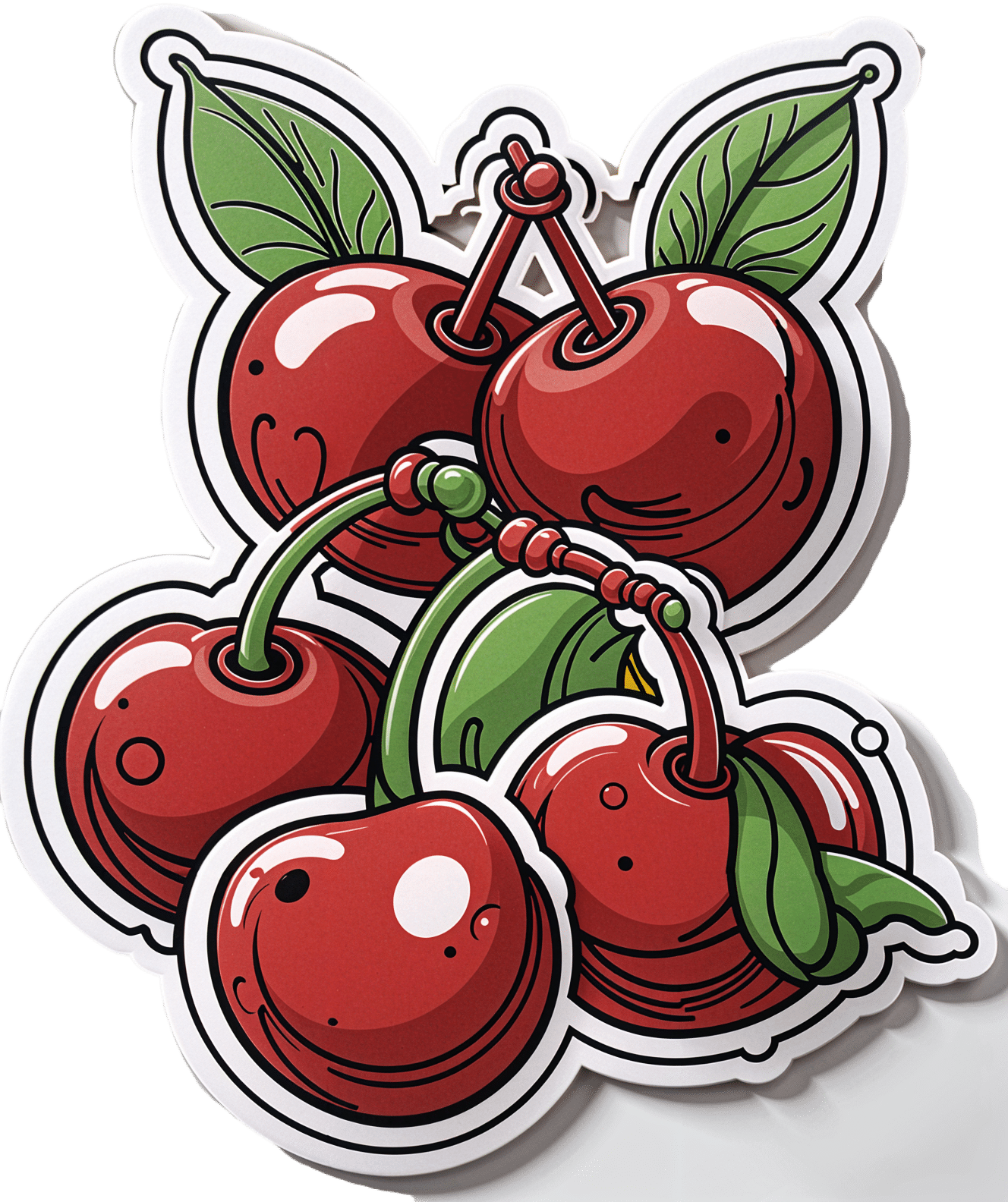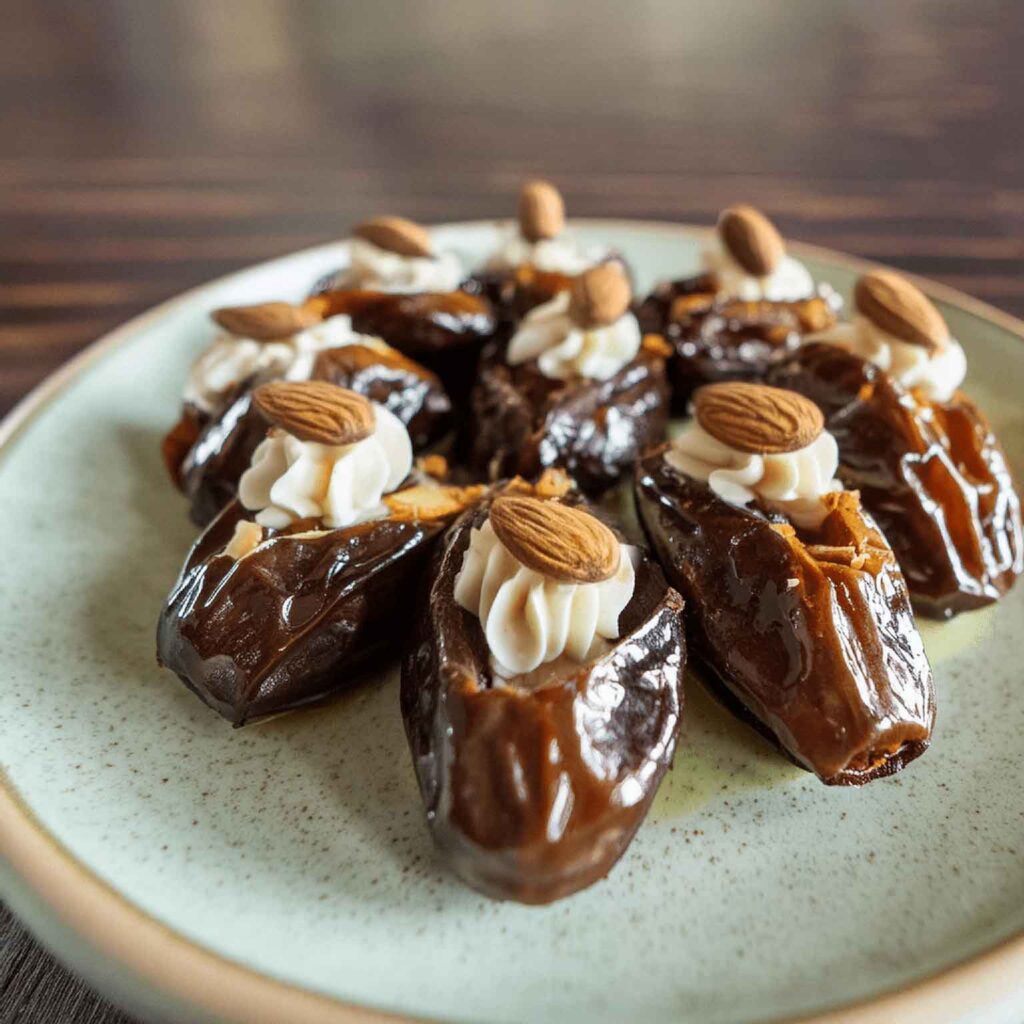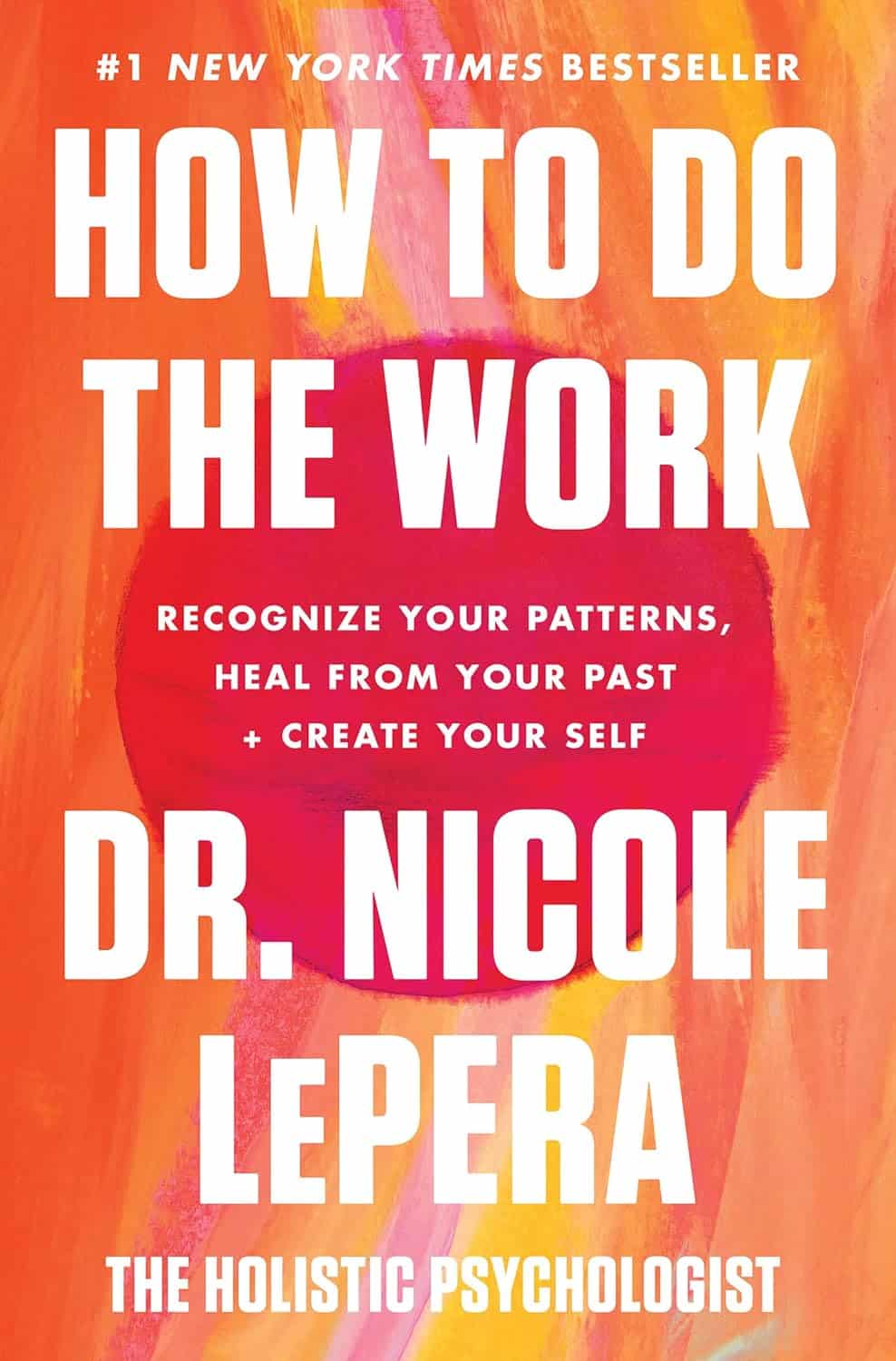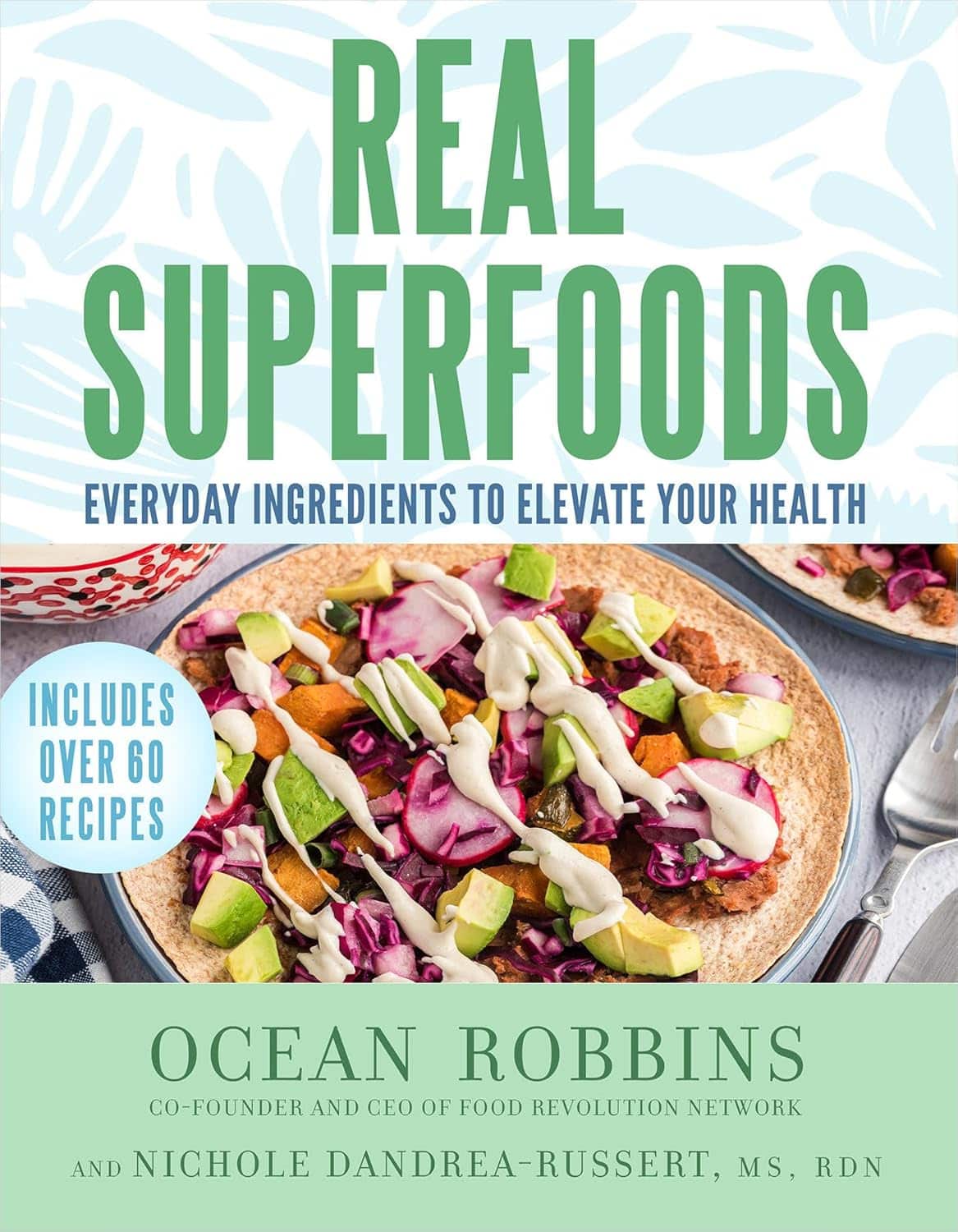
Cherries’ Very Healthy Wealth Of Benefits!
10almonds is reader-supported. We may, at no cost to you, receive a portion of sales if you purchase a product through a link in this article.
Cherries’ Health Benefits Simply Pop
First, be aware, there are different kinds:
Sweet & Sour
Cherries can be divided into sweet vs sour. These are mostly nutritionally similar, though sour ones do have some extra benefits.
Sweet and sour cherries are closely related but botanically different plants; it’s not simply a matter of ripeness (or preparation).
These can mostly be sorted into varieties of Prunus avium and Prunus cerasus, respectively:
Cherry Antioxidants: From Farm to Table
Sour cherry varieties include morello and montmorency, so look out for those names in particular when doing your grocery-shopping.
You may remember that it’s a good rule of thumb that foods that are more “bitter, astringent, or pungent” will tend to have a higher polyphenol content (that’s good):
Enjoy Bitter Foods For Your Heart & Brain
Juiced up
Almost certainly for reasons of budget and convenience, as much as for standardization, most studies into the benefits of cherries have been conducted using concentrated cherry juice as a supplement.
At home, we need not worry so much about standardization, and our budget and convenience are ours to manage. To this end, as a general rule of thumb, whole fruits are pretty much always better than juice:
Which Sugars Are Healthier, And Which Are Just The Same?
Antioxidant & anti-inflammatory!
Cherries are a very good source of antioxidants, and as such they also reduce inflammation, which in turn means ameliorating autoimmune diseases, from common things like arthritis…
…to less common things like gout:
Cherry Consumption and the Risk of Recurrent Gout Attacks
This can also be measured by monitoring uric acid metabolites:
Consumption of cherries lowers plasma urate in healthy women
Anti-diabetic effect
Most of the studies on this have been rat studies, and the human studies have been less “the effect of cherry consumption on diabetes” and more a matter of separate studies adding up to this conclusion in, the manner of “cherries have this substance, this substance has this effect, therefore cherries will have this effect”. You can see an example of this discussed over the course of 15 studies, here:
A Review of the Health Benefits of Cherries ← skip to section 2.2.1: “Cherry Intake And Diabetes”
In short, the jury is out on cherry juice, but eating cherries themselves (much like getting plenty of fruit in general) is considered good against diabetes.
Good for healthy sleep
For this one, the juice suffices (actual cherries are still recommended, but the juice gave clear significant positive results):
Pilot Study of the Tart Cherry Juice for the Treatment of Insomnia and Investigation of Mechanisms ← this was specifically in people over the age of 50
Importantly, it’s not that cherries have a sedative effect, but rather they support the body’s ability to produce melatonin adequately when the time comes:
Effect of tart cherry juice (Prunus cerasus) on melatonin levels and enhanced sleep quality
Post-exercise recovery
Cherries are well-known for boosting post-exercise recovery, though they may actually improve performance during exercise too, if eaten beforehand/
For example, these marathon-runners who averaged 13% compared to placebo control:
As for its recovery benefits, we wrote about this before:
How To Speed Up Recovery After A Workout (According To Actual Science)
Want to get some?
We recommend your local supermarket (or farmer’s market!), but if for any reason you prefer to take a supplement, here’s an example product on Amazon
Enjoy!
Don’t Forget…
Did you arrive here from our newsletter? Don’t forget to return to the email to continue learning!
Recommended
Learn to Age Gracefully
Join the 98k+ American women taking control of their health & aging with our 100% free (and fun!) daily emails:
-
Tiramisu Crunch Bites
10almonds is reader-supported. We may, at no cost to you, receive a portion of sales if you purchase a product through a link in this article.
It’s coffee, it’s creamy, it’s nutty, it’s chocolatey, what’s not to love? It has all the well-loved flavors of tiramisu, but this recipe is a simple one, and it’s essentially stuffed dates in a way you’ve never had them before. They’re delectable, decadent, and decidedly good for your health. These things are little nutrient-bombs that’ll keep you reaching for more.
You will need
- Coffee (we will discuss this)
- 150g (5.5oz) mascarpone (if vegan or lactose-intolerant, can be substituted with vegan varieties, or at a pinch, pressed silken tofu)
- 500g (1lb) dates (Medjool are ideal)
- Twice as many almonds as you have dates
- 50g (2oz) dark chocolate (the darkest, bitterest, you can find)
- Edible flower petals if you can source them (some shops sell dried rose petals for this purpose)
Method
(we suggest you read everything at least once before doing anything)
1) Take the mascarpone and whisk (or blend) it with the coffee. What kind of coffee, you ask? Many will use instant coffee (1tbsp granules mixed with enough boiling water to dissolve it), and that is actually healthiest (counterintuitive but true) but if you care for flavor over health, and have the means to make espresso, make it ristretto (so, stop it halfway through filling up an espresso cup), let it cool, and use that. Absolute bonus for flavor (not for health): if you have the means to make Turkish coffee, use an equivalent amount of that (again, cooled).
You will now have coffee-flavoured mascarpone. It’s great for your gut and full of antioxidant polyphenols. Set it aside for the moment.
2) Take the dark chocolate and melt it. Please don’t microwave it or try to do it in a pan directly over the hob; instead, you will need to use a Bain-Marie. If you don’t have one made-for-purpose, you can place a metal or heatproof glass bowl in a saucepan, with something to stop it from touching the floor of the pan. Then boil water in the pan (without letting the water get into the bowl), and melt the chocolate in the bowl—this will allow you to melt it evenly without burning the chocolate.
You will now have melted dark chocolate. It has its own set of polyphenols, and is great for everything from the brain to the gut microbiome.
3) Cut the dates lengthways on one side and remove the stone. Stuff them carefully with the coffee-flavored mascarpone (you can use a teaspoon, or use a piping kit if you have one). Add a couple of almonds to each one. Place them all on a big plate, and drizzle the melted chocolate over them. Add the petals if you have them.
The dates and almonds deliver extra vitamins and minerals in abundance (not to mention, lots of fiber), and also are an amazing combination even just by themselves. With the mascarpone and chocolate added, this winning on new levels. We’re not done yet, though…
4) Chill them in the fridge for about 30 minutes.
Serve!
Learn more
For those interested in some of the science of what we have going on today:
- Make The Heart-Healthiest Coffee ← this is about cafestol content and why instant is heart-healthiest (alas)
- The Bitter Truth About Coffee (Or Is It) ← this is about the health benefits (and some risks, but mostly benefits) of coffee
- Why You Should Diversify Your Nuts ← almonds are a top-tier choice, but other nuts are good too! This recipe could work well with hazelnuts, for example (we wouldn’t call it “tiramisu crunch bites” in that case, though, since the flavor profile would change)
- Which Sugars Are Healthier, And Which Are Just The Same? ← for any worrying “aren’t dates sugary, though?”
Enjoy!
Share This Post
-
How to Do the Work – by Dr. Nicole LaPera
10almonds is reader-supported. We may, at no cost to you, receive a portion of sales if you purchase a product through a link in this article.
We have reviewed some self-therapy books before, and they chiefly have focused on CBT and mindfulness, which are great. This one’s different.
Dr. Nicole LaPera has a bolder vision for what we can do for ourselves. Rather than giving us some worksheets for unraveling cognitive distortions or clearing up automatic negative thoughts, she bids us treat the cause, rather than the symptom.
For most of us, this will be the life we have led. Now, we cannot change the parenting style(s) we received (or didn’t), get a redo on childhood, avoid mistakes we made in our adolescence, or face adult life with the benefit of experience we gained right after we needed it most. But we can still work on those things if we just know how.
The subtitle of this book promsies that the reader can/will “recognise your patterns, heal from your past, and create your self”.
That’s accurate, for the content of the book and the advice it gives.
Dr. LaPera’s focus is on being our own best healer, and reparenting our own inner child. Giving each of us the confidence in ourself; the love and care and/but also firm-if-necessary direction that a (good) parent gives a child, and the trust that a secure child will have in the parent looking after them. Doing this for ourselves, Dr. LaPera holds, allows us to heal from traumas we went through when we perhaps didn’t quite have that, and show up for ourselves in a way that we might not have thought about before.
If the book has a weak point, it’s that many of the examples given are from Dr. LaPera’s own life and experience, so how relatable the specific examples will be to any given reader may vary. But, the principles and advices stand the same regardless.
Bottom line: if you’d like to try self-therapy on a deeper level than CBT worksheets, this book is an excellent primer.
Click here to check out How To Do The Work, and empower yourself to indeed do the work!
Share This Post
-
A Surprisingly Powerful Tool: Eye Movement Desensitization & Reprocessing
10almonds is reader-supported. We may, at no cost to you, receive a portion of sales if you purchase a product through a link in this article.
Eye Movement Desensitization & Reprocessing (EMDR)
What skeletons are in your closet? As life goes on, most of accumulate bad experiences as well as good ones, to a greater or lesser degree. From clear cases of classic PTSD, to the widely underexamined many-headed beast that is C-PTSD*, our past does affect our present. Is there, then, any chance for our future being different?
*PTSD is typically associated with military veterans, for example, or sexual assault survivors. There was a clear, indisputable, Bad Thing™ that was experienced, and it left a psychological scar. When something happens to remind us of that—say, there are fireworks, or somebody touches us a certain way—it’ll trigger an immediate strong response of some kind.
These days the word “triggered” has been popularly misappropriated to mean any adverse emotional reaction, often to something trivial.
But, not all trauma is so clear. If PTSD refers to the result of that one time you were smashed with a sledgehammer, C-PTSD (Complex PTSD) refers to the result of having been hit with a rolled-up newspaper every few days for fifteen years, say.
This might have been…
- childhood emotional neglect
- a parent with a hair-trigger temper
- bullying at school
- extended financial hardship as a young adult
- “just” being told or shown all too often that your best was never good enough
- the persistent threat (real or imagined) of doom of some kind
- the often-reinforced idea that you might lose everything at any moment
If you’re reading this list and thinking “that’s just life though”, you might be in the estimated 1 in 5 people with (often undiagnosed) C-PTSD.
For more on C-PTSD, see our previous main feature:
So, what does eye movement have to do with this?
Eye Movement Desensitization & Reprocessing (EMDR) is a therapeutic technique whereby a traumatic experience (however small or large; it could be the memory of that one time you said something very regrettable, or it could be some horror we couldn’t describe here) is recalled, and then “detoothed” by doing a bit of neurological jiggery-pokery.
How the neurological jiggery-pokery works:
By engaging the brain in what’s called bilateral stimulation (which can be achieved in various ways, but a common one is moving the eyes rapidly from side to side, hence the name), the event can be re-processed, in much the same way that we do when dreaming, and relegated safely to the past.
This doesn’t mean you’ll forget the event; you’d need to do different exercises for that.
See also our previous main feature:
The Dark Side Of Memory (And How To Make Your Life Better)
That’s not the only aspect of EMDR, though…
EMDR is not just about recalling traumatic events while moving your eyes from side-to-side. What an easy fix that would be! There’s a little more to it.
The process also involves (ideally with the help of a trained professional) examining what other memories, thoughts, feelings, come to mind while doing that. Sometimes, a response we have today associated with, for example, a feeling of helplessness, or rage in conflict, or shame, or anything really, can be connected to previous instances of feeling the same thing. And, each of those events will reinforce—and be reinforced by—the others.
An example of this could be an adult who struggles with substance abuse (perhaps alcohol, say), using it as a crutch to avoid feelings of [insert static here; we don’t know what the feelings are because they’re being avoided], that were first created by, and gradually snowballed from, some adverse reaction to something they did long ago as a child, then reinforced at various times later in life, until finally this adult doesn’t know what to do, but they do know they must hide it at all costs, or suffer the adverse reaction again. Which obviously isn’t a way to actually overcome anything.
EMDR, therefore, seeks to not just “detooth” a singular traumatic memory, but rather, render harmless the whole thread of memories.
Needless to say, this kind of therapy can be quite an emotionally taxing experience, so again, we recommend trying it only under the guidance of a professional.
Is this an evidence-based approach?
Yes! It’s not without its controversy, but that’s how it is in the dog-eat-dog world of academia in general and perhaps psychotherapy in particular. To give a note to some of why it has some controversy, here’s a great freely-available paper that presents “both sides” (it’s more than two sides, really); the premises and claims, the criticisms, and explanations for why the criticisms aren’t necessarily actually problems—all by a wide variety of independent research teams:
Research on Eye Movement Desensitization & Reprocessing (EMDR) as a Treatment for PTSD
To give an idea of the breadth of applications for EMDR, and the evidence of the effectiveness of same, here are a few additional studies/reviews (there are many):
- An Eye Movement Desensitization and Reprocessing (EMDR) Group Intervention for Syrian Refugees With Post-traumatic Stress Symptoms: Results of a Randomized Controlled Trial
- Cognitive Behavioral Therapy vs. Eye Movement Desensitization and Reprocessing for Treating Panic Disorder: A Randomized Controlled Trial
- Eye movement desensitization and reprocessing (EMDR) therapy in the treatment of depression: a matched pairs study in an inpatient setting
- Emergency room intervention to prevent post concussion-like symptoms and post-traumatic stress disorder. A pilot randomized controlled study of a brief eye movement desensitization and reprocessing intervention versus reassurance or usual care
As for what the American Psychiatric Association says about it:
❝After assessing the 120 outcome studies pertaining to the focus areas, we conclude that for two of the areas (i.e., PTSD in children and adolescents and EMDR early interventions research) the strength of the evidence is rated at the highest level, whereas the other areas obtain the second highest level.❞
Source: The current status of EMDR therapy, specific target areas, and goals for the future
Want to learn more?
To learn a lot more than we could include here, check out the APA’s treatment guidelines (they are written in a fashion that is very accessible to a layperson):
APA | Eye Movement Desensitization and Reprocessing (EMDR) Therapy
Take care!
Share This Post
Related Posts
-
F*ck You Chaos – by Dominika Choroszko
10almonds is reader-supported. We may, at no cost to you, receive a portion of sales if you purchase a product through a link in this article.
We’ve all read decluttering books. Some may even have decluttering books cluttering bookshelves. This one’s a little different, though:
Dominika Choroszko looks at assessing, decluttering, and subsequently organizing:
- Your home
- Your mind
- Your finances
In other words
- she starts off like Marie Kondo, and…
- phases through doing the jobs of Queer Eye’s “Fab Five”, before…
- sitting us down with some CBT worksheets, and…
- finally going through finances à la Martin Lewis.
By the time we’ve read the book, it’s as though Mary Poppins has breezed through our house, head, and bank account, leaving everything “practically perfect in every way”.
Of course, it’s on us to actually do the work, but as many of us struggle with “how” and the ever-dreaded “but where to begin”, Choroszko’s whirlwind impetus and precision guidance (many very direct practical steps to take) really grease the wheels of progress.
In short, this could be the book that kickstarts your next big “getting everything into better order” drive, with a clear step-by-step this-then-this-then-this linear process.
Don’t Forget…
Did you arrive here from our newsletter? Don’t forget to return to the email to continue learning!
Learn to Age Gracefully
Join the 98k+ American women taking control of their health & aging with our 100% free (and fun!) daily emails:
-
Real Superfoods – by Ocean Robbins & Nichole Dandrea-Russert
10almonds is reader-supported. We may, at no cost to you, receive a portion of sales if you purchase a product through a link in this article.
Of the two authors, the former is a professional public speaker, and the latter is a professional dietician. As a result, we get a book that is polished and well-presented, while actually having a core of good solid science (backed up with plenty of references).
The book is divided into two parts; the first part has 9 chapters pertaining to 9 categories of superfood (with more details about top-tier examples of each, within), and the second part has 143 pages of recipes.
And yes, as usual, a couple of the recipes are “granola” and “smoothie”, but when are they not? Most of the recipes are worthwhile, though, with a lot of good dishes that should please most people.
Bottom line: this is half pop-science presentation of superfoods, and half cookbook featuring those ingredients. Definitely a good way to increase your consumption of superfoods, and get the most out of your diet.
Click here to check out Real Superfoods, and power up your health!
Don’t Forget…
Did you arrive here from our newsletter? Don’t forget to return to the email to continue learning!
Learn to Age Gracefully
Join the 98k+ American women taking control of their health & aging with our 100% free (and fun!) daily emails:
-
Peony Against Inflammation & More
10almonds is reader-supported. We may, at no cost to you, receive a portion of sales if you purchase a product through a link in this article.
Yes, this is about the flower, especially white peony (Paeonia lactiflora), and especially the root thereof (Paeoniae radix alba). Yes, the root gets a different botanical name but we promise it is the same plant. You will also read about its active glycoside paeoniflorin, and less commonly, albiflorin (a neuroprotective glycoside present in the root).
It’s one of those herbs that has made its way out of Traditional Chinese Medicine and into labs around the world.
It can be ingested directly as food, or as a powder/capsule, or made into tea.
Anti-inflammatory
Peony suppresses inflammatory pathways, which thus reduces overall inflammation. In particular, this research review found:
❝Pharmacologically, paeoniflorin exhibits powerful anti-inflammatory and immune regulatory effects in some animal models of autoimmune diseases including Rheumatoid Arthritis (RA) and Systemic Lupus Erythematosus (SLE)❞
The reviewers also (albeit working from animal models) suggest it may be beneficial in cases of kidney disease and liver disease, along with other conditions.
Here’s a larger review, which also has studies involving humans (and in vivo studies), that found it to effectively help treat autoimmune conditions including rheumatoid arthritis and psoriasis, amongst others:
❝Modern pharmacological research on TGP is based on the traditional usage of PRA, and its folk medicinal value in the treatment of autoimmune diseases has now been verified. In particular, TGP has been developed into a formulation used clinically for the treatment of autoimmune diseases.
Based on further research on its preparation, quality control, and mechanisms of action, TGP is expected to eventually play a greater role in the treatment of autoimmune diseases. ❞
(TGP = Total Glucosides of Paeony)
Antidepressant / Anxiolytic
It also acts as a natural serotonin reuptake inhibitor (as per many pharmaceutical antidepressants), by reducing the expression of the serotonin transporter protein:
Gut Microbiota-Based Pharmacokinetics and the Antidepressant Mechanism of Paeoniflorin
(remember, most serotonin is produced in the gut)
Here’s how that played out when tested (on rats, though):
Against PMS and/or menopause symptoms
Peony is widely used in Traditional Chinese Medicine to reduce these symptoms in general. However, we couldn’t find a lot of good science for that, although it is very plausible (as the extract contains phytoestrogens and may upregulate estrogen receptors while dialling down testosterone production). Here’s the best we could find for that, and it’s a side-by-side along with licorice root:
❝Paeoniflorin, glycyrrhetic acid and glycyrrhizin decreased significantly the testosterone production but did not change that of delta 4-androstenedione and estradiol. Testosterone/delta 4-androstenedione production ratio was lowered significantly by paeoniflorin, glycyrrhetic acid and glycyrrhizin❞
Effect of paeoniflorin, glycyrrhizin and glycyrrhetic acid on ovarian androgen production
(note: that it didn’t affect estradiol levels is reasonable; it contains phytoestrogens after all, not estradiol—and in fact, if you are taking estradiol, you might want to skip this one, as its phytoestrogens could compete with your estradiol for receptors)
Want to try some?
We don’t sell it, but here for your convenience is an example product on Amazon 😎
Enjoy!
Don’t Forget…
Did you arrive here from our newsletter? Don’t forget to return to the email to continue learning!
Learn to Age Gracefully
Join the 98k+ American women taking control of their health & aging with our 100% free (and fun!) daily emails:








